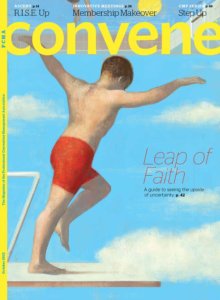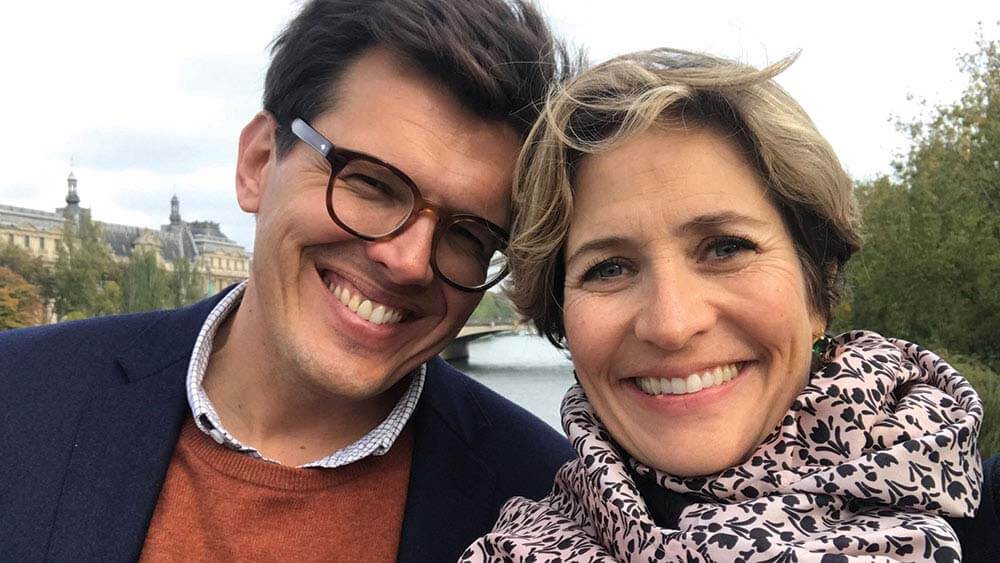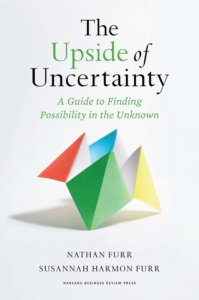
Our October 2022 cover. (Illustration by Gérard DuBois)
We are still coming to terms with the how the pandemic has affected our collective psyche and upended many of the ways we go about our business in the world, from where we work to how we shop. From a business events industry perspective, it would be difficult to find another sector that was equally rocked to its core by the pandemic. And now as in-person events return, planners face a host of COVID-related uncertainties that make forecasting for upcoming events less of a science and more of a game of whack-a-mole — just as they address one issue as best they can, another pops up, whether it’s fluctuating supplier costs, supply-chain issues, worker shortages, sustainability concerns, the politics in the host destination, or gauging their audience’s appetite for in-person, hybrid, and virtual events.
Uncertainty was an often-cited challenge in the responses to our most-recent Salary Survey published in our September issue — which isn’t surprising given all of those challenges and the fact that organizers consider every possible scenario in order to strip uncertainty out of the planning process. But planners’ comments in the survey also revealed a split: Some said they hated the uncertainties while others relished the opportunity to use this time to experiment.
Is mindset alone what differentiates the two camps? That plays a big part, say husband and wife authors Nathan Furr and Susannah Harmon Furr in their recent book, The Upside of Uncertainty: A Guide to Finding Possibility in the Unknown. We are all wired to fear the downsides of uncertainty, they write. “But we forget that change, creation, transformation, and innovation rarely show up without some measure of it.” The two collaborated on the book to provide tools that can help us cultivate a critical skill they call an “uncertainty ability,” rooted in their belief in the human capacity for transilience — literally to leap across — to embrace change.
Nathan Furr is a professor of strategy and innovation at INSEAD in Paris and a recognized expert in the fields of innovation and technology strategy. He set out to write this book as a guide for business leaders but was convinced by his entrepreneur wife, who is also a designer and art historian, to make it more of a resource anyone can tap into. The book draws on hundreds of interviews, research in psychology, innovation, and behavioral economics, as well as their own lived experiences.
“I come from a very academic background,” Nathan told Convene in a Zoom interview with Susannah in late August. “I have an entire thread of my work, which is published purely to academics in top-tier journals, where you can only have the most robust proof and validation, so that breeds a certain insecurity. In collaborating with Susannah, I was particularly anxious because she really pushed to write this to individuals. She said, ‘Listen, I know you speak to businesses and to managers, but underneath that is a human being who feels anxiety. You have to write it to them first,’” as well as for others who are navigating uncertainties of a more personal than professional nature.
Susannah said collaborating on the book with Nathan demonstrated the synergy that can result from “different people coming together on something. I wish more people would write and teach from different perspectives, because I kept seeing how if I were writing this alone, it would not be as rigorous — I wouldn’t have had all the data and academic know-how he has.” But, she added, the book wouldn’t have benefited from her insistence on bringing in diverse perspectives and examples.
Nathan concurred that he “would’ve just written a talking head business book” on his own. And, he said, taking an interdisciplinary approach — the “recombination of ideas” that underpins innovation, his area of study — enriched the experience of writing this book and its output.
Convene asked the couple to apply the tools they offer in their book to the business events industry. The way they riffed on ideas together offered a glimpse into their collaborative style.

Nathan Furr and Susannah Harmon Furr, parents of four children, collaborated on a book for the first time.
One of the things that makes it so hard for planners to plan with certainty about expected attendance levels, for example, is contradictory information. For instance, one study will say that people are anxious to return to face-to-face events, while another says we’re much more comfortable with learning digitally. How do you reconcile contradictory inputs — is that just part of dealing with uncertainty?
NATHAN: I think part of the challenge COVID presented to many organizations — to me, you could fill in the blank with any other number of shocks and uncertainties — is we designed so much for optimization. We designed for a world of certainty, so that if everything went according to plan, then we would get the greatest possible outcome. But we realize that in an uncertain world, you actually need to be designing for uncertainty, designing for flexibility.
And how do we do that? How do we expect that the future could be different than we might have thought it would be and design to live by experiment, instead? If I were to be very specific about your [industry]: How do we design events so that they are able to accommodate for both virtual and physical? And for the physical, how would we even design an event that could contract or expand according to the revealed need?
I’ll give you an example. We’re redesigning the INSEAD campus. We struggle because our classrooms are full. And one of the things I push the redesign team [about is that the] answer isn’t just to make more classrooms, because let’s imagine all the ways in which the future could be. It could be there are more students on campus. It could be suddenly that people become deeply aware of the environmental cost of flying 50 executives to campus. So, what we want to design is a campus that’s like an accordion — we could experiment and expand it and contract it, and it’s designed for flexibility. That builds on our principle of taking small steps, living by experiment. … Because the future will reveal itself. Nobody knows it. You can’t forecast it, and you need to acknowledge that you’re getting conflicting information.
Having been to events, I often see rooms that have [flexible] dividers down the side. Could you say, “Okay, I’m going to contract for this small number and I’m actually going to contract that we could have these two stages of expansion.” And perhaps you could [incentivize the venue] and they could share in some of the reward if you expanded [the audience]?
I am right this week in the middle of teaching my big course of digital trans- formation and innovation. I always taught it face-to-face before COVID. I taught it only online during COVID. Post-COVID, I’m now teaching it both face-to-face and online — we have to design for this. Conflicting information says something.

The Upside of Uncertainty was released in July 2022 and published by Harvard Business Review Press.
What other ways would you suggest approaching the design of an event in an uncertain environment?
SUSANNAH: I’m thinking more about the importance of the feel of the event [and reminded] of a visit we made to 1440 Multiversity [a nonprofit learning destination in the California Redwoods]. It’s a beautiful campus and it’s really inspiring. You can take Tai Chi or yoga, and the food is perfect. What I’m trying to say is that sometimes events over-promise, and they’re not authentic when you get there and you’re kind of disappointed. Which is what people who say, “I’m not getting on a plane again,” are thinking. Maybe they’ve gone to too many events where they come home depleted, like it was a slog. They were away from their family, they missed their kid’s birthday. I think for events to be in person, we need people to get super creative and super vulnerable and just be human, to make events that are so worth attending that they’re like, “I will go every year.”
It’s about activating and unlocking — what is the reason for this in-person event? And if we can do it online, then let’s create the best thing we can and just get super energized by focusing in on what we are trying to do and letting something amazing emerge.
NATHAN: I was thinking of our Infinite Game tool [see sidebar on p. 46], which says that people tend to view life, and we could say events, business, whatever it may be, as a finite or infinite game. In a finite game, the objective is to win, or we could say to maximize profits. The rules, roles, and boundaries of the game are very fixed. Any uncertainty presents as very distressing because it means that we might not win. But for infinite players … it’s about the fun of playing, the joy of the game. As a result, they view the rules, roles, and boundaries as flexible.
And I can’t help but wonder if I sat down in a room with [attendees] if I could crack their shells a bit and say, “What’s a more infinite game approach to a conference?” Not just that they see some great speakers on stage and maybe bump into some people at the coffee table. How could you make it a really fun, enjoyable game to play?
I love that idea of working with participants so they can think of ways they’d find the experience more edgy and fun.
SUSANNAH: You know what I want to say, though? I went with Nathan to a global business forum in New York City and while it was a great conference, their opening 60-second video — a collage of people going up elevators and moving around — was disturbing, not the kind of pump-you-up thing you would want. The images and music were really disconcerting and kind of robotic and matrix-y, weird and dystopian. I think there’s a lot of room for [organizers] to be shifting how they’re motivating people, but this wasn’t edgy [in a good way].
NATHAN: What I want to go back to is how do we activate and unlock why people are coming. Because I want to learn, I want to connect to people, I want to be inspired, I want to see things in new ways. I think the question is how could we redesign the experience to be that for people?
How do you make the principles in your book part of your toolkit without going back to your old habits when confronting uncertainty?
NATHAN: Habits, yeah. But we can retrain them. I think every time we do have one of those moments where uncertainty happens and we’re able to reframe it or take action in a new way, or sustain ourselves, that gives us…
SUSANNAH: An added layer.
NATHAN: It’s that layer of like, “Oh wait, I could do that.”
Michelle Russell is editor in chief of Convene.
How Event Professionals Deal with Uncertainty
Unknown Possibilities
In The Upside of Uncertainty: A Guide to Finding Possibility in the Unknown, authors Nathan Furr and Susannah Harmon Furr offer four groups of tools to help increase our uncertainty ability:
Reframe
Reframe tools enable and strengthen a perspective shift, motivating you to look creatively for all the possibilities and to believe in an upside that you can’t see yet.
One Reframe tool: Infinite Game. New York University professor James Carse describes life as a game with two types of people: finite and infinite players. Finite players accept the roles life gives them (e.g., lawyer, manager, parent, spouse) and play by the received rules in an effort to win. Infinite players play with the roles and bend the rules, not to win the game but for the joy of playing.
Prime
Prime tools prepare you by encouraging projects that matter to you, taking into account your personal uncertainty landscape to enable satisfying outcomes when it’s time to act.
One Prime tool: Dumbo Feathers. When preparing to face uncertainty, it’s important to surround ourselves with helpful people who believe we are up to the task. The premise of the entire field of social psychology is
that outcomes are affected as much by our surroundings as our free will. When we have encouragement from our friends and family, our confidence grows. Thus, who and what we spend time with become either Dumbo feathers — recall the cartoon elephant Dumbo, who gained the confidence to fly by holding on to a “magic feather” (really just an ordinary feather) — or quest destroyers that hold us back from achieving our dreams.
Do
Do tools describe how to thoughtfully unlock the rewarding possibilities hidden in the uncertainties you face to promote a future you want to live in.
One Do tool: Cognitive Flexibility. A study of “near misses” that looked at prominent scientists who just barely missed the Nobel Prize–winning breakthrough for silencing ribonucleic acid illuminated this principle. Interviews with the scientists, all of whom were leading researchers in the topic, revealed that they failed to recognize anomalies in their own data, resisted trying solutions outside the established paradigm, and failed to connect to people outside their discipline who held the keys to the ultimate solution. In other words, they didn’t adopt an attitude of wisdom or have the cognitive flexibility to update their mental maps.
Sustain
Sustain tools give comfort and remind you why and how to keep going, or how to pivot when things don’t go as planned.
One Sustain tool: Emotional Hygiene. Just as our physical bodies require hygiene, our emotional bodies do as well. Yet today we still pay limited attention to our emotional care, which undoubtedly prolongs our emotional suffering. It doesn’t make sense to hurt ourselves emotionally, but that is precisely what most of us do … when it comes to dealing with uncertainty. [W]e critique our lack of courage, criticize mistakes, and feel shame for taking a risk that doesn’t work out. Author and psychologist Guy Winch says this kind of thinking can be debilitating: “If your mind tries to convince you you’re incapable of something, and you believe it, then … you’ll begin to feel helpless and you’ll stop trying too soon, or you won’t even try at all. … You see, that’s why so many people function below their actual potential. Because somewhere along the way, sometimes a single failure convinced them that they couldn’t succeed, and they believed it.”
Learn More …
… about the tools in The Upside to Uncertainty at theupsideofuncertainty.com.
Portions of this excerpt have been condensed and paraphrased for brevity.

